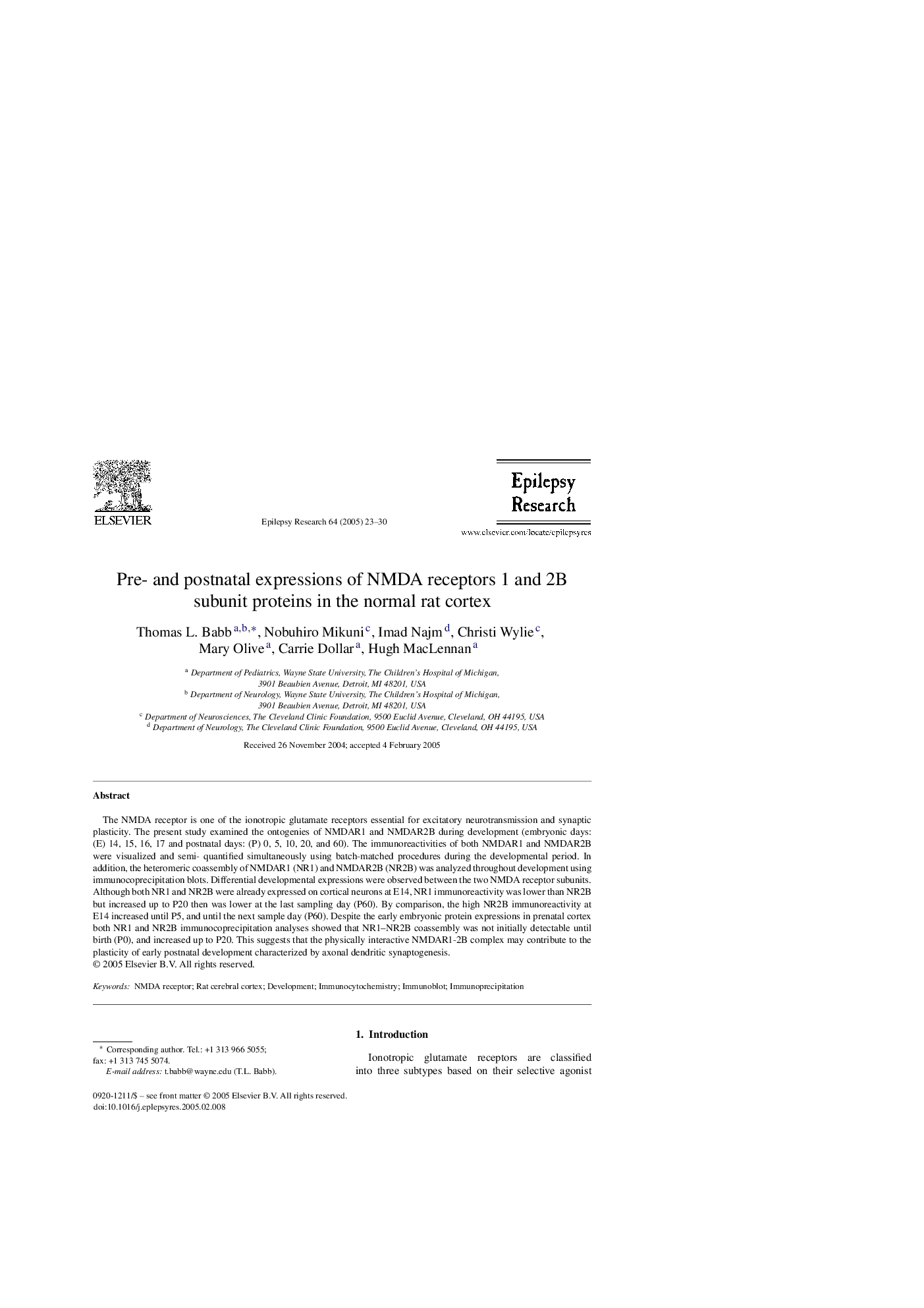| Article ID | Journal | Published Year | Pages | File Type |
|---|---|---|---|---|
| 9191261 | Epilepsy Research | 2005 | 8 Pages |
Abstract
The NMDA receptor is one of the ionotropic glutamate receptors essential for excitatory neurotransmission and synaptic plasticity. The present study examined the ontogenies of NMDAR1 and NMDAR2B during development (embryonic days: (E) 14, 15, 16, 17 and postnatal days: (P) 0, 5, 10, 20, and 60). The immunoreactivities of both NMDAR1 and NMDAR2B were visualized and semi- quantified simultaneously using batch-matched procedures during the developmental period. In addition, the heteromeric coassembly of NMDAR1 (NR1) and NMDAR2B (NR2B) was analyzed throughout development using immunocoprecipitation blots. Differential developmental expressions were observed between the two NMDA receptor subunits. Although both NR1 and NR2B were already expressed on cortical neurons at E14, NR1 immunoreactivity was lower than NR2B but increased up to P20 then was lower at the last sampling day (P60). By comparison, the high NR2B immunoreactivity at E14 increased until P5, and until the next sample day (P60). Despite the early embryonic protein expressions in prenatal cortex both NR1 and NR2B immunocoprecipitation analyses showed that NR1-NR2B coassembly was not initially detectable until birth (P0), and increased up to P20. This suggests that the physically interactive NMDAR1-2B complex may contribute to the plasticity of early postnatal development characterized by axonal dendritic synaptogenesis.
Keywords
Related Topics
Life Sciences
Neuroscience
Neurology
Authors
Thomas L. Babb, Nobuhiro Mikuni, Imad Najm, Christi Wylie, Mary Olive, Carrie Dollar, Hugh MacLennan,
